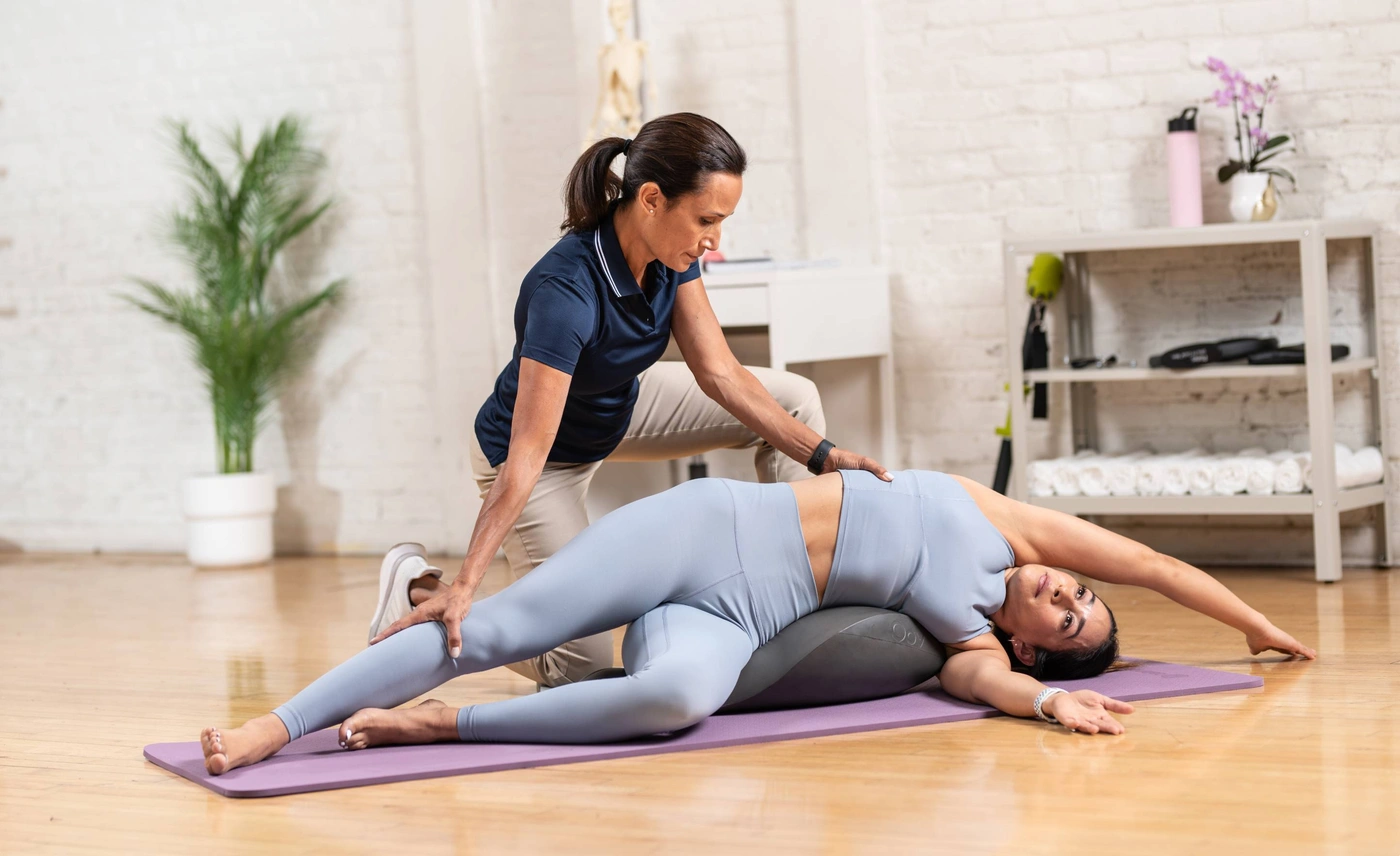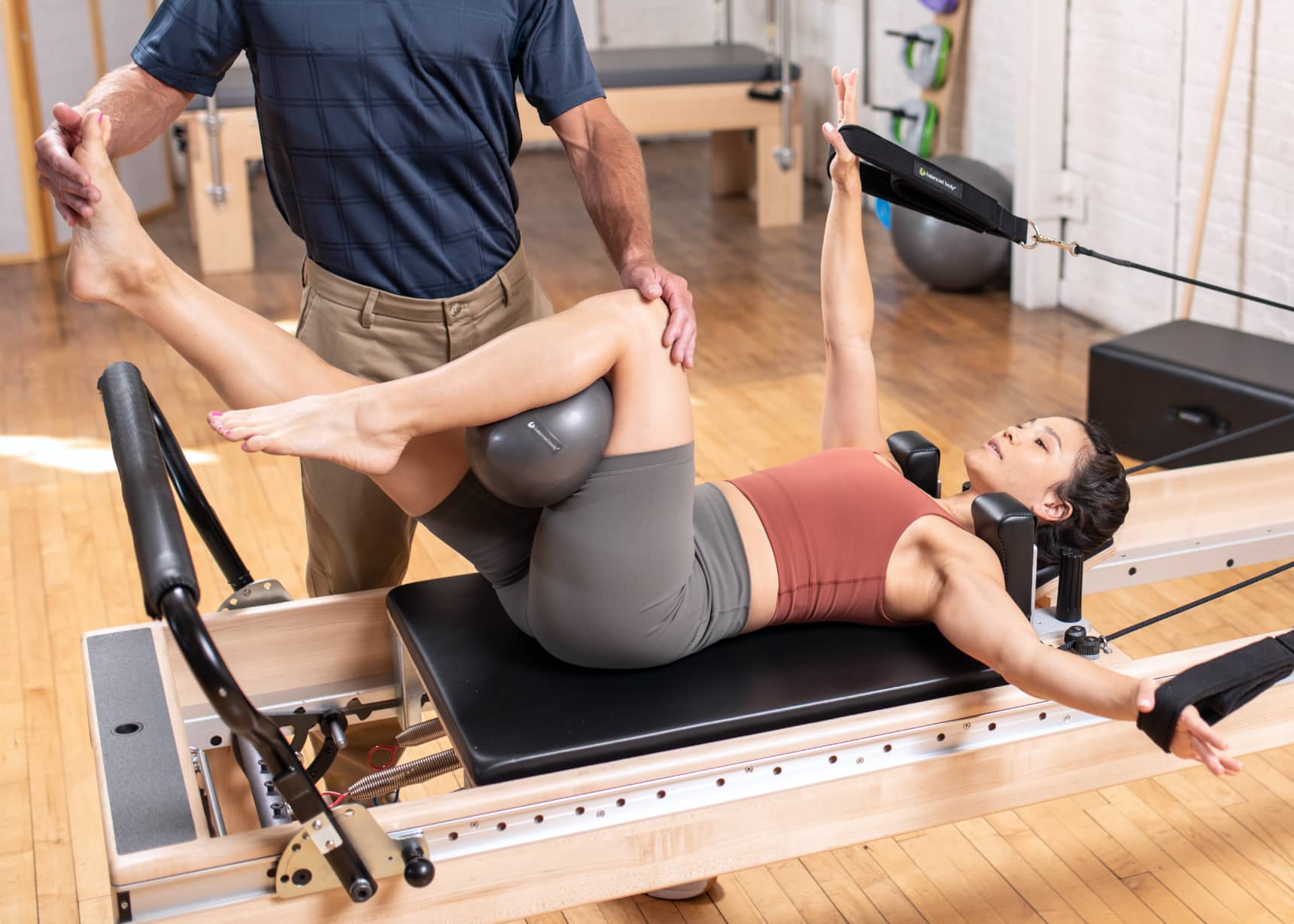Rehab: A Different Kind of Pilates
Rehab: A Different Kind of Pilates
By Brent Anderson, PhD, PT, OCS
Pilates continues to receive attention in the field of rehabilitation – with good reason. Research supports Pilates as an appropriate intervention for common orthopedic injuries. And when compared to other common forms of rehabilitation, it has been equal if not superior in physical, psychological and disability measures.
What is Pilates for Rehabilitation?
Is Pilates for rehabilitation the original or classical work touted by millions around the world as the best “ab-buster”? No. It is, however, the powerful and flexible environment that Pilates equipment can provide for patients with an ability to manipulate gravity and supply assistance to movement that might normally be too fatiguing to execute. It is also the combined principles of breathing, core strengthening, alignment, integration and spine articulation that offer an opportunity to re-align the body and mind.

Positive Patient Outcomes
Many would suggest that providing a positive movement experience without pain might be the single greatest contributing factor to successful outcome in patients. A positive outcome signifies a return to activities that were limited prior because of an injury or disease process. Clinically, practitioners have noticed a range of successful outcomes with clients suffering a variety of aliments – from Parkinson’s Disease to chronic low back pain – with the help of Pilates.
Support for Chronic Illness and Injury Recovery
Pilates can be manipulated to create a positive movement experience for special populations that cannot be over heated or fatigued (e.g. Multiple Sclerosis, Stroke, Parkinson’s, ALS). The ability to modify a functional activity – like sit-to-stand, reaching, rotating, and walking within the Pilates environment – is key to a successful movement experience. The ability to grade difficulty using springs, levers, and gravity provides a continuum that can help patients reach their ultimate rehabilitation goal – the successful restoration of function.

Pilates Therapeutic Movement Training
Pilates training for physical therapists necessitates skill levels that far exceed the normal memorization of the Pilates repertoire. It requires critical reasoning to identify objectives, match clients goals, design an intervention, and create modifications to facilitate a positive movement experience, as well as the ability to adjust the program daily to progress the client towards function.
Advanced Pilates education, as well as a physical therapy license are required when working with rehabilitation patients. It should be noted that much of the current research in the field is now being conducted by therapists certified in a comprehensive Pilates program, along with additional training in critical reasoning.
About the Author
Brent Anderson PhD, PT, OCS is President and CEO of Polestar Pilates. A licensed Physical Therapist and Orthopedic Certified Specialist for more than 13 years, Anderson is a leading authority in performing arts medicine and Pilates–evolved techniques for rehabilitation. He lectures widely at national and international symposia and consults with professional dance companies, schools, and conservatories throughout the world.
As seen in the Fall 2005 Balanced Body Pilates COREterly